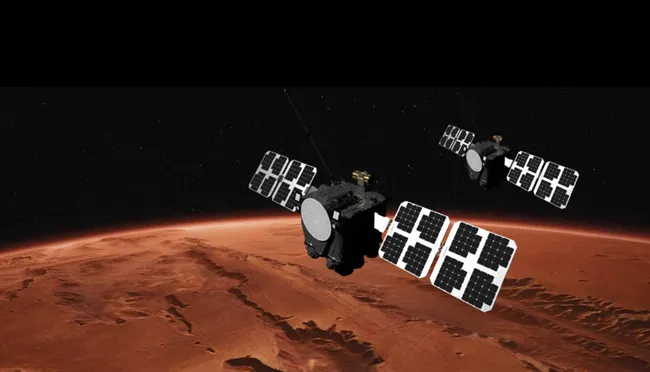Reports that humanity finally launched another mission toward Mars, yet NASA’s twin ESCAPADE probes will not be reaching the Red Planet soon. The spacecraft lifted off on Nov. 13 aboard Blue Origin’s New Glenn rocket, marking the first Mars-focused launch since Perseverance and Ingenuity departed in 2020.
Instead of heading directly to Mars, New Glenn delivered the probes to the sun–Earth Lagrange Point 2, a stable region nearly 1.5 million kilometers from Earth. This detour exists because efficient Earth–Mars alignment occurs only every 26 months, with the next window opening in late 2026. The probes will remain at L2 for a year, analyzing space weather before returning toward Earth in November 2026 for a gravity assist that redirects them to Mars.
Mission engineers describe ESCAPADE’s unusual path as a potential model for future Mars missions. Jeffrey Parker of Advanced Space highlighted that the project proves launches toward Mars remain feasible even when planetary positions are unfavorable. Managed by UC Berkeley, the mission uses two spacecraft named Blue and Gold, built by Rocket Lab and equipped with identical scientific payloads.
Travel from L2 to Mars will last about ten months, with orbital arrival expected in September 2027. After reaching Mars, the probes will take seven months to adjust and synchronize their orbits. They will operate like two “pearls on a string,” enabling rapid sequential measurements that previous missions could not capture. This configuration allows them to observe atmospheric and magnetic variations on timescales as short as two minutes.
Each probe carries a camera system, magnetometer, electrostatic analyzer, and Langmuir probe. During their eleven-month science phase, they will map Mars’ upper atmosphere and magnetic fields, creating the first stereo profile of the planet’s near-space environment. Their findings should clarify how Mars lost its atmosphere and identify conditions that future crews or settlers may encounter.
Although the mission requires patience due to its extended timeline, the team remains accustomed to long waits in planetary science.

